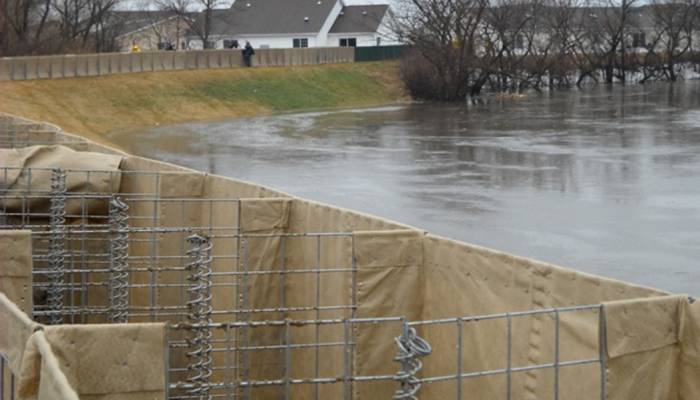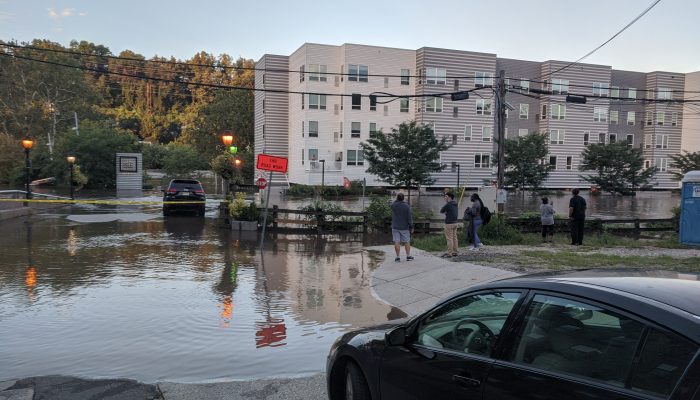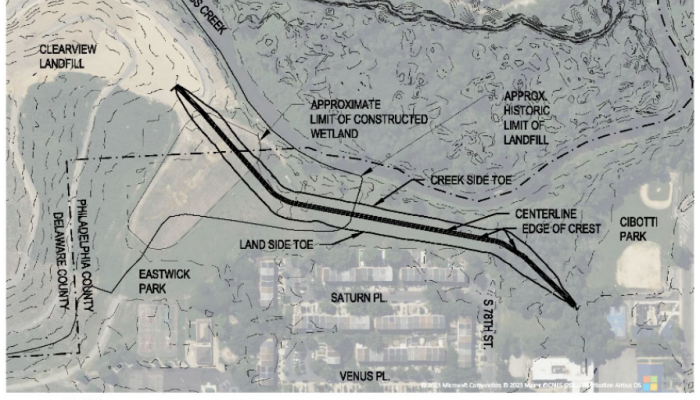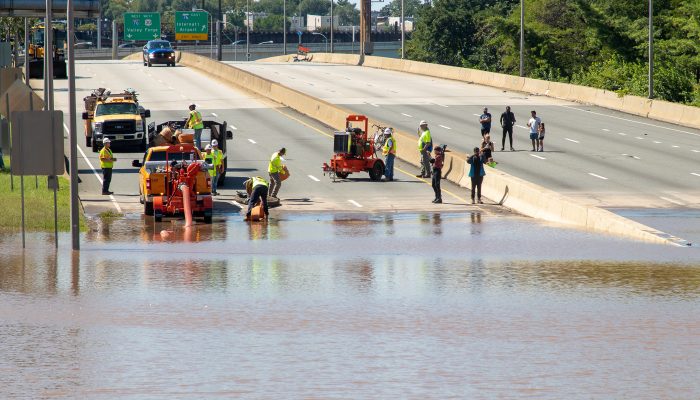Located in Southwest Philadelphia, Eastwick is one of the lowest-lying neighborhoods in the city and faces growing flood risks and flooding events with climate change. Following years of studies and calls to action from residents, the City is now gearing up to build its first implementation project – the Eastwick Near-Term Flood Barrier Project – as an interim measure to protect vulnerable residents and increase flood resilience while a long-term solution is in the works.
What is the Eastwick Near-term Flood Barrier Project?
The Eastwick Near-Term Flood Barrier Project will build a HESCO® barrier in the most flood-prone part of Eastwick to mitigate moderate flooding events stemming from the Cobbs and Darby Creeks. HESCO® barriers – soil-filled boxes made of fabric mesh and a wire frame – are used in interim flood protection projects nationwide, including in New York City. Compared to a levee, the HESCO® barriers in this location will be shorter in height and quicker to implement. The project’s design process is tentatively scheduled to begin in spring 2025.
The project is funded through a combination of federal appropriations and recovery funding. The Office of Sustainability (OOS) will receive over $1.38 million in congressionally delegated funding, secured by U.S. Rep. Mary Gay Scanlon, to implement near-term flood risk reduction measures in Eastwick. The City also plans to use funds from the Community Development Block Grant Disaster Recovery (CDBG-DR) program as a local match. The CDBG-DR program supports Philadelphia’s recovery and mitigation efforts following the impacts of Hurricane Ida.
Through the Eastwick: From Recovery to Resilience initiative, the Office of Sustainability has been supporting residents, community organizations, and government partners to develop a community-driven, long-term flood resilience strategy for Eastwick. This includes supporting the Philadelphia Water Department and the U.S. Army Corps of Engineers with an ongoing feasibility study of building a levee to mitigate flooding along Cobbs Creek. While long-term solutions are being evaluated, and with support from FEMA and PEMA, OOS has been committed to pursuing funding sources to design and build interim flood barriers that bring relief to residents and properties in the nearer term.




